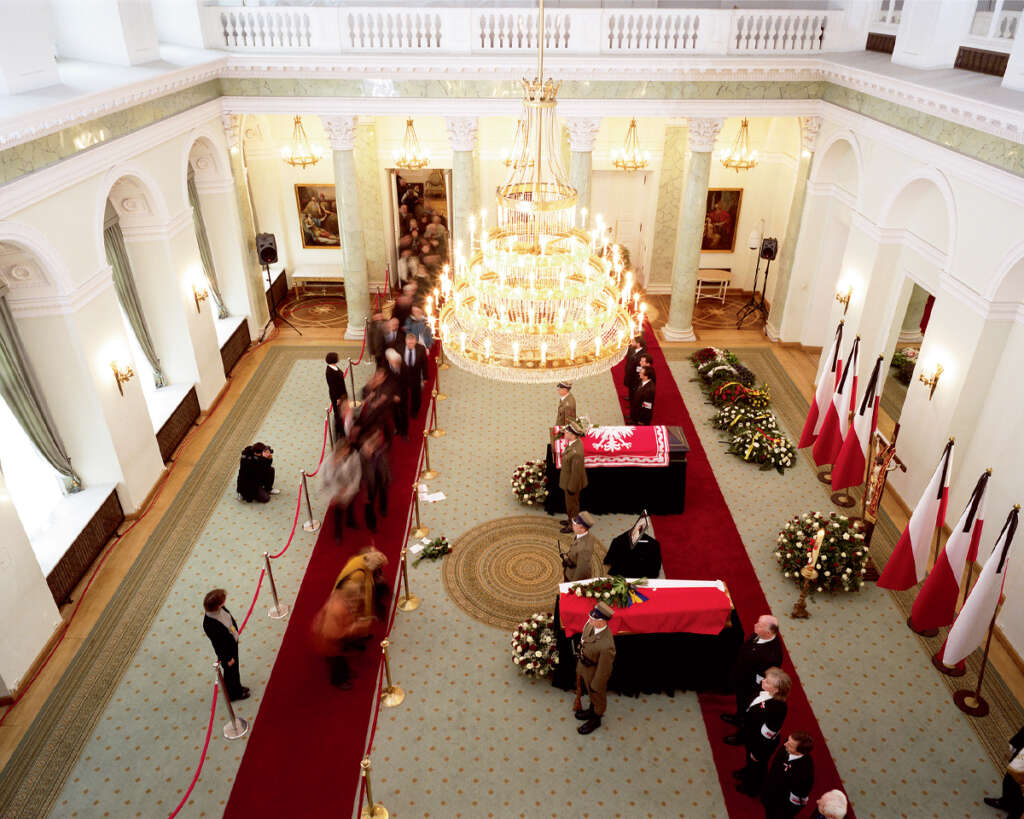Systematic study of ceremonies

In the context of Arnold van Gennep's scholarly treatise "Les rites de passages," which is, as the subtitle states, "A Systematic Study of Ceremonies," the choice of baptisms, communions, weddings and funerals as subjects for a photographic series with a title borrowed from the French anthropologist seems to be a most justifiable step.
However, in Przemyslaw Pokrycki's extensive project, carried out since 2005, funeral rituals made their final appearance, while their first presentation took place during the famous exhibition "New Documentarians" at the CCA Ujazdowski Castle in 2006.
In the photographs from this initial period of interest in funerary themes, we see primarily scenes of vigil at the dead, which by their arrangement and character participate in the
in the ritual of persons strongly reminds me of rural pictures from Upper Silesia a century or so ago, where it was popular custom to make visual mementos of the farewell of the departing person (for the record, such performances were not
exclusively Silesian specifics).
The striking series of photographs of mourners grouped around an open coffin, all in the claustrophobic interiors of big-box apartments, while fitting perfectly with the aforementioned photographs of baptisms, communions and weddings (also usually taken in a cramped space), does not, however, exhaust the subject, and not only in visual terms. Somehow the author of the project himself must have been aware of this when he included funeral rituals of a more official - read: state - nature in his series at some point. The growing number of casualties on the side of the Polish military mission in Afghanistan, and finally the recent plane crash near Smolensk, gave Pokrycki an unusual opportunity to record the visual shape of these ceremonies.
This is important insofar as, if we consider his project as an undertaking with an anthropological bent as well, such a broader presentation of the subject, taking into account funerary rituals licensed by the institution of the state and the Catholic Church firmly embedded in it, corresponds perfectly with the horizon of van Gennep's scientific research, which resulted in his "Les rites de passages."

The subject of death and the rituals associated with it is not very often hosted in the contemporary visual information circuit (which focuses the viewer's attention on easily accessible credit and unbridled consumption). Of course, I am referring to rituals of a private nature. On the occasion of the crash of the presidential Tupolev 154 M, the aforementioned sphere was significantly reduced, and we had to deal with a veritable deluge of television reports, maintained in a peculiar convention that is an explosive mixture of pop-culture coverage and national martyrdom mythology. Przemyslaw Pokrycki reacted to this situation in a very conscious way and accompanied the performance of the aforementioned rituals with his Mamiya 7. The material he recorded, as befits a "new documentary filmmaker", is distanced and factual (and therefore far from "conjuring reality" or "capturing magic moments"), while also being visually attractive. Succumbing to this characteristic of Pokrycki's frames, however, we still have the opportunity to look at the presented situations not only with the eye of a consumer of photographic images, which I encourage everyone to do and heartily recommend to you.





The article appeared in issue 35 of "Fotografia Quarterly" in 2010
